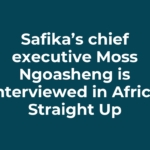Tshipi’s new rail siding gets a place in the history books
JOHANNESBURG (miningweekly.com) – Transnet is compiling the first-ever distributed power train for manganese, made up of 208 wagons.
The train will be loaded at the newly completed rail siding of black-controlled emerging manganese miner Tshipi é Ntle’s new project, near Kathu, in the Northern Cape.
“It’s the train of the future,” Tshipi é Ntle CEO Finn Behnken told Mining Weekly Online on the sidelines of last week’s Metal Bulletin Events’ fifth Ferro-Alloy conference in Johannesburg.
Transnet Freight Rail has opted to compile the train to increase the volumes of manganese exports from Port Elizabeth and ultimately Coega.
“That train will be compiled at our railway siding,” said Behnken.
Struggle veteran Saki Macozoma is chairperson of Tshipi é Ntle, in which the black economically empowered Ntsimbintle Mining owns 50.1% and the ASX-listed and Pallinghurst-linked Jupiter Mines owns 49.9%. Pallinghurst is headed by mining luminary Brian Gilbertson.
The distributed power train makes use of the same technology that Transnet deploys down the iron-ore railway line from Sishen to Saldanha, on which 342-wagon trains travel.
Typically, the trains on the manganese general freight line to Port Elizabeth have been shorter, predominantly consisting of 104 wagons.
Transnet is poised to do the once-off trial run with a train made up of two 104-wagon sets with locomotives at the front and rear.
The locomotives communicate by radio signal with one drive-control unit managing the power.
Although the long train will be loaded with ore, it will not be Tshipi’s ore, the first of which is only scheduled to be available from the company’s Tshipi Borwa openpit project towards the end of 2012.
This article was published on www.miningweekly.com.
View the article online at http://www.miningweekly.com/article.php?a_id=267962

